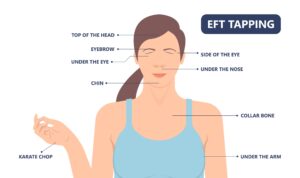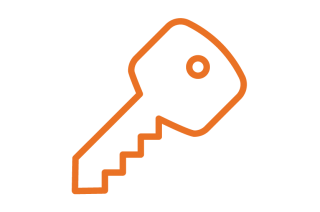Unlock the Power of Tapping
Are you looking for ways to reduce daily stress and invite more calm into your life? Look no further, Emotional Freedom Technique (EFT), often called “tapping”, is a gentle yet powerful practice that’s easy to learn and even easier to do.
Here we explore what tapping is, how it works, and the benefits it can bring to your emotional and physical well-being. All you need to get you started is an open mind and our simple step-by-step guide.
What is tapping?
Tapping is a combination of ancient acupressure and modern psychology. The idea behind tapping is simple: by gently tapping on specific points on the body (primarily on the face and hands) while focusing on a troubling thought or feeling, you can calm your nervous system, reduce stress, and restore emotional balance.
Think of it as a way of pulling the plug on overwhelming thoughts and feelings before they take over. It’s like hitting a reset button for your emotions.
How does it work?
Tapping is based on the concept of energy pathways in the body, often referred to in traditional Chinese medicine as “meridians.” These pathways are believed to support the flow of energy, or “Qi,” that helps your body stay balanced. Negative emotions, stress, or past traumas can disrupt this flow, leaving you feeling emotionally or physically stuck.
Tapping on these meridian points, while acknowledging negative emotions, can help realign your mind and body. Research suggests that tapping reduces cortisol (stress hormone) levels, which results in a sense of calm and well-being.
The benefits of tapping
Whether you’re dealing with the pressures of modern life, adjusting to retirement, or managing health concerns, EFT can provide relief. Here are some of the key benefits:
Reduces stress and anxiety
Whether it’s health worries or financial concerns, tapping can help calm your racing mind. By focusing on specific worries while tapping, you’ll often feel lighter and more in control.
Supports emotional well-being
We all go through ups and downs. If you are feeling overwhelmed or frustrated a few minutes of tapping can help restore a sense of emotional balance.
Improves sleep
Many people use EFT to calm the thoughts and feelings that keep them awake at night. It’s a gentle way to prepare your mind for relaxation and sleep.
Eases physical discomfort
Some people find regular tapping helps reduce physical symptoms tied to chronic stress or old injuries. While it’s not a replacement for medical care, it can be an effective addition to your self-care routine.
Boosts confidence and resilience
Tapping empowers you to face challenges with a clearer, calmer mindset. Many report increased confidence when they regularly practise tapping.
It’s portable
You can practise it anywhere – at home, on a walk, or even while waiting for your morning brew to steep.
Step-by-step tapping for beginners
Identify the problem
Pick something that’s bothering you. It could be an emotion, such as worry or sadness, or even a physical ache. Be as specific as possible. For example, instead of “I feel bad,” try “I’m worried about my upcoming doctor’s appointment.”
Rate the intensity
On a scale from 0 to 10, how intense does this problem feel right now? This will help you measure your progress after tapping.
Set up your affirmation
Before you start tapping, you’ll say a phrase to acknowledge your problem, followed by a statement of self-acceptance. For example:
“Even though I feel anxious about my appointment, I deeply and completely accept myself.”
Tap on specific points
Now it’s time to tap! Use the tips of two fingers to gently tap about 5-7 times on each of the following points, while repeating your affirmation or describing your feelings. Say it out loud or silently, whichever feels comfortable. Here are the points to tap:
- Side of the Hand (also called the “Karate Chop” point)
- Eyebrow (just where the eyebrow starts near the nose)
- Side of the Eye (outside corner of the eye)
- Under the Eye (just below the lower eyelid)
- Under the Nose
- Chin (just below your bottom lip)
- Collarbone (about an inch below the inner edge of your collarbone)
- Underarm (about 4 inches below the armpit)
- Top of the Head (centre of the top of your scalp)


Reassess
After completing the sequence, take a deep breath. Rate the intensity of your problem again on a scale from 0 to 10. Has it decreased? If so, great! If it’s still high, repeat the process until you feel noticeably calmer.
With its combination of gentle physical touch and mindful focus, tapping offers a sense of control in what can feel like an overwhelming world. It’s easy to practise and completely free.
Take five minutes to try it today, start small, stick with it, and see how you feel. Whether you’re trying to ease aches or build emotional resilience, you’ll be pleasantly surprised how a little tapping may make a big difference.
Interested in similar articles? Why not check these out:











